Introduction – How Do You Prepare for Vasisthasana? What Is the Spiritual Meaning of Vasisthasana?
In the vast landscape of yoga, there exists a multitude of poses, each offering unique benefits and challenges. One such pose that invites practitioners to explore strength, balance, and mindfulness is Vasishtasana, commonly known as Side Plank Pose. This asana, named after the sage Vasishta, embodies both grace and stability, making it a valuable addition to any yoga practice.
Table of Contents
Spiritual Meaning of Vasishtasana | The Yogic Philosophy of The Vasishtasana
Vasishtasana is named after the revered sage Vasishta, a prominent figure in Hindu mythology and one of the Saptarishis, or seven great seers. According to ancient texts, Sage Vasishta possessed profound knowledge and wisdom, embodying the qualities of strength, balance, and equanimity.

Vasishtasana, as a yogic posture, reflects the virtues associated with its namesake. The pose requires a delicate interplay of strength and grace, mirroring the harmony sought in the yogic journey. As practitioners engage in the physical manifestation of Vasishtasana, they are invited to embody the qualities symbolized by Sage Vasishta – the strength to navigate life’s challenges with resilience and the balance to maintain equipoise in the face of dualities.
What Are the Benefits of Vasisthasana?
Vasisthasana, or Side Plank Pose, is a dynamic yoga pose that offers a myriad of benefits for the body and mind. As practitioners engage in this challenging yet rewarding asana, they unlock various advantages that contribute to overall well-being.
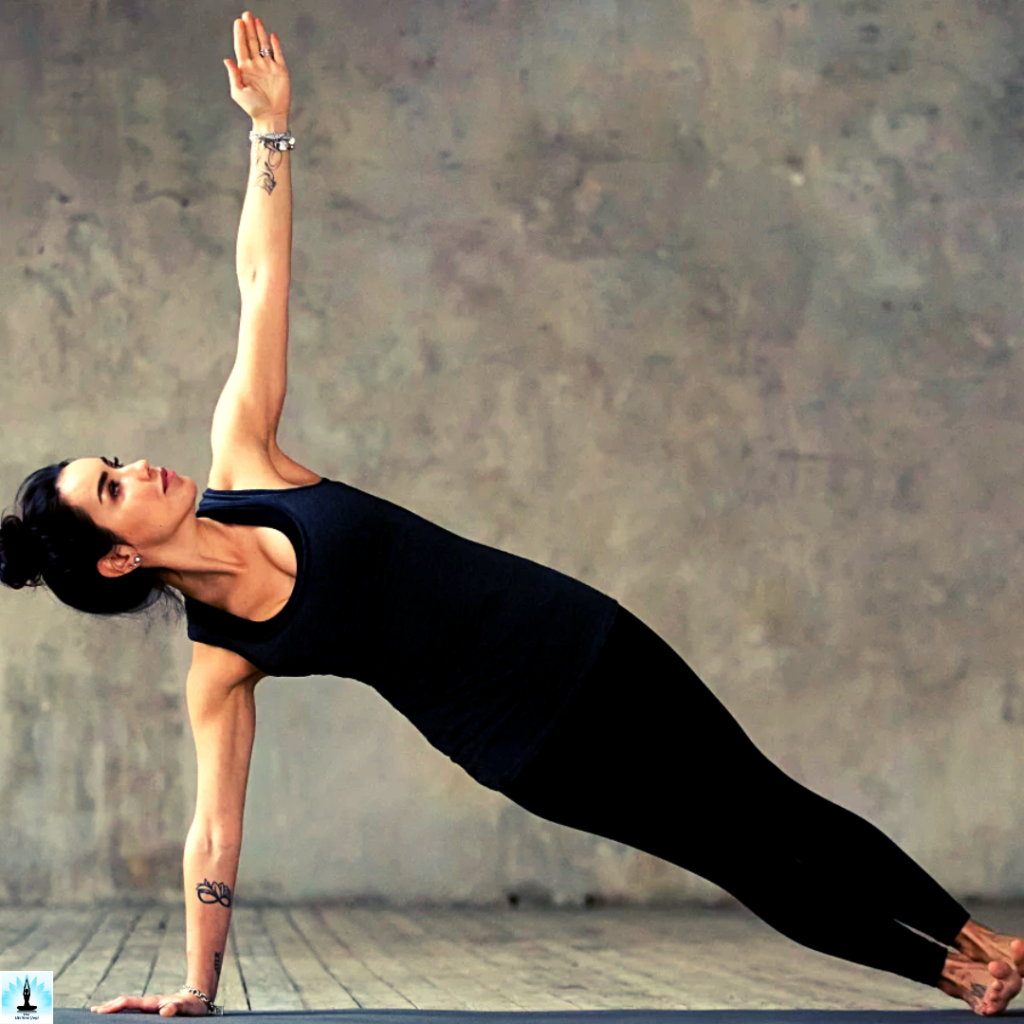
Strengthens Core Muscles
Vasisthasana actively engages the core muscles, including the obliques and transverse abdominis. This sustained engagement builds strength in the abdominal region, promoting stability.
Enhances Balance and Concentration
The one-sided balance required in Side Plank cultivates a heightened sense of balance and concentration. Practicing this pose regularly helps improve focus and mindfulness.
Tones Arms and Shoulders
Weight-bearing on one arm in Vasisthasana tones and strengthens the arms, shoulders, and wrists. This can contribute to increased upper body strength over time.
Stimulates Digestive Organs
The twist inherent in this pose stimulates the abdominal organs, including the liver and kidneys. This can support digestion and detoxification processes.
Develops Wrist Strength and Flexibility
The pose demands weight distribution on one hand, aiding in the development of wrist strength and flexibility. However, individuals with existing wrist issues should approach with caution.
Improves Spinal Flexibility
Vasisthasana involves a lateral stretch and extension of the spine. Regular practice contributes to improved spinal flexibility and mobility.
Encourages Full-Body Activation
This asana activates various muscle groups, including the legs, creating a full-body engagement. The holistic nature of Vasisthasana contributes to overall physical conditioning.
How Do You Prepare for Vasisthasana? Side Plank Pose: Step by Step Instructions
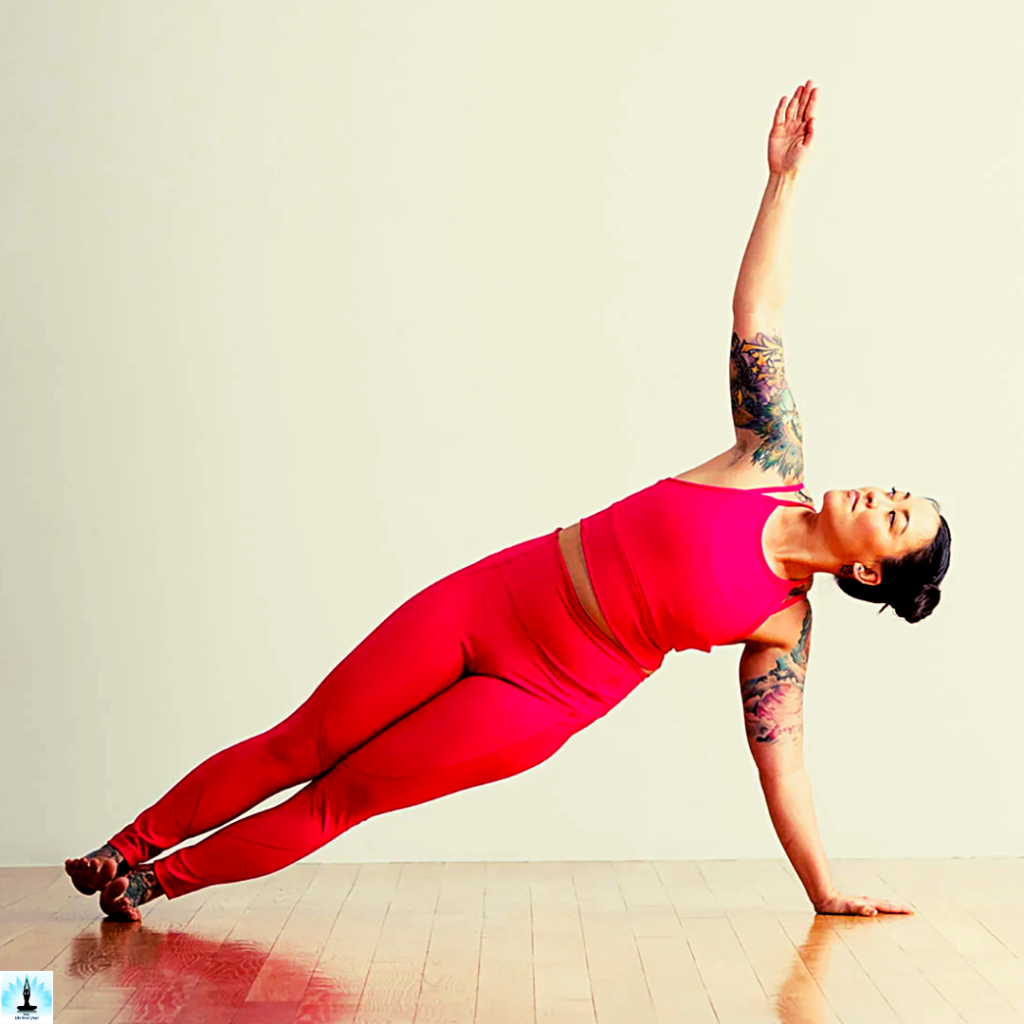
Vasisthasana, or Side Plank Pose, is a challenging yoga posture that demands both strength and stability. Adequate preparation is crucial to approach this pose safely and effectively. Follow this step-by-step guide to prepare for Vasisthasana:
1. Warm-Up
Begin with a gentle warm-up to awaken the body and increase blood flow. Incorporate wrist stretches, shoulder rolls, and core-engaging poses to prepare the targeted muscle groups.
2. Core Strengthening
Vasisthasana heavily engages the core muscles. Include core-strengthening exercises such as Plank Pose and variations, Boat Pose (Navasana), and Leg Raises to build stability in the abdominal region.
3. Wrist Mobility
Given the weight-bearing nature of Vasisthasana on one hand, it’s essential to enhance wrist mobility. Practice gentle wrist stretches and rotations to ensure flexibility and prevent strain.
4. Shoulder Opening
Open up the shoulders to facilitate the arm extension in Side Plank. Incorporate poses like Cow Face Pose (Gomukhasana), Eagle Arms, and Shoulder Stretch to release tension in the shoulders.
5. Plank Variation
Since Vasisthasana involves a transition from Plank, practice holding Plank Pose for extended periods. Experiment with side Plank variations, lifting one leg or arm at a time, to familiarize yourself with the weight distribution.
6. Leg Strength
Strengthen the legs to support the body in a lifted position. Include poses like Warrior Poses (Virabhadrasana series), Chair Pose (Utkatasana), and Lunges to build leg strength.
7. Controlled Breathing
Develop controlled and steady breathing. Focus on deep diaphragmatic breaths to calm the mind and maintain composure during the challenging aspects of Vasisthasana.
8. Modifications
Begin with modified versions of Side Plank by supporting the bottom knee on the mat. Gradually progress to the full expression as strength and confidence build.
Advanced Variations of Vasishtasana
As practitioners become proficient in the basic form, they can gradually introduce these advanced variations to elevate their practice. Here are some progressive variations of Vasishtasana:
1. Vasishtasana with Tree Pose Leg
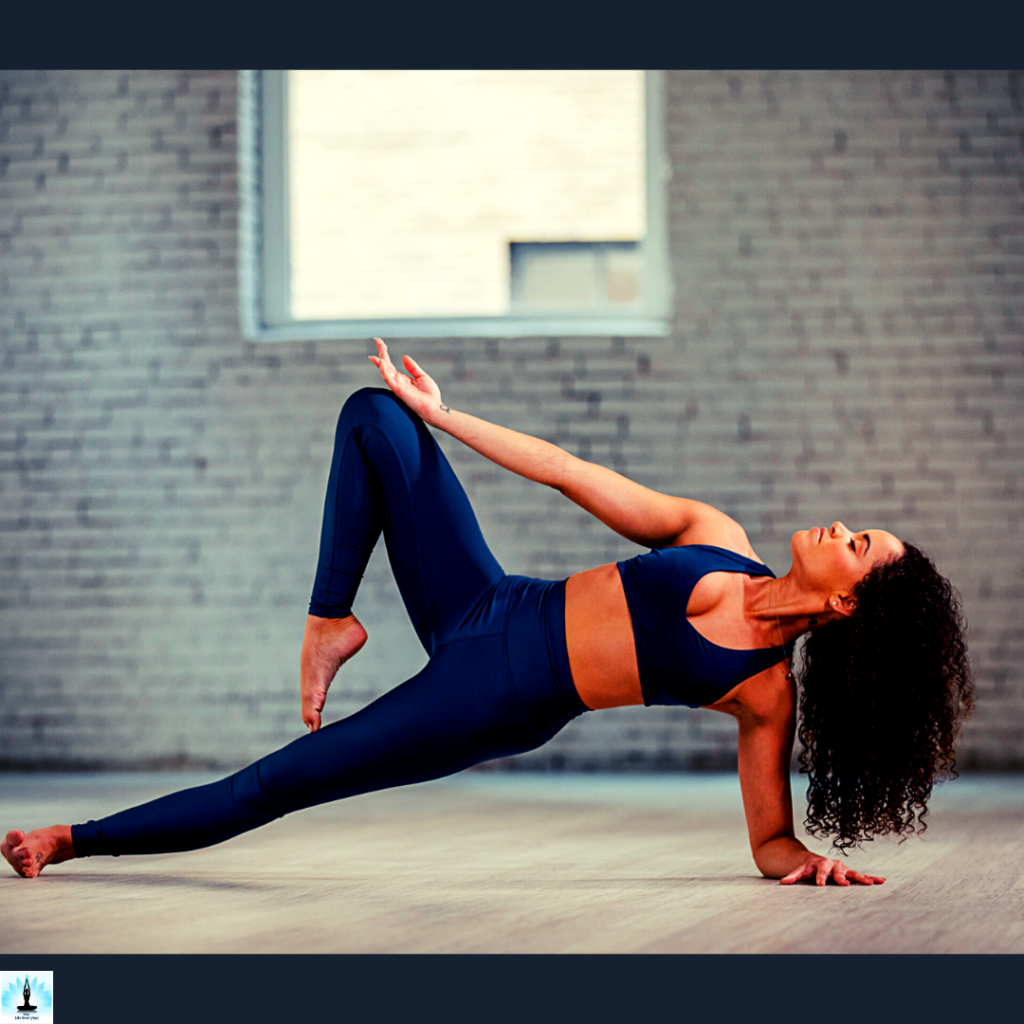
Elevate the challenge by lifting the top leg into Tree Pose while maintaining the side plank position. This variation demands increased core stability and hip flexibility. Find balance and extend the raised foot toward the sky.
2. Vasishtasana with Toe Hold
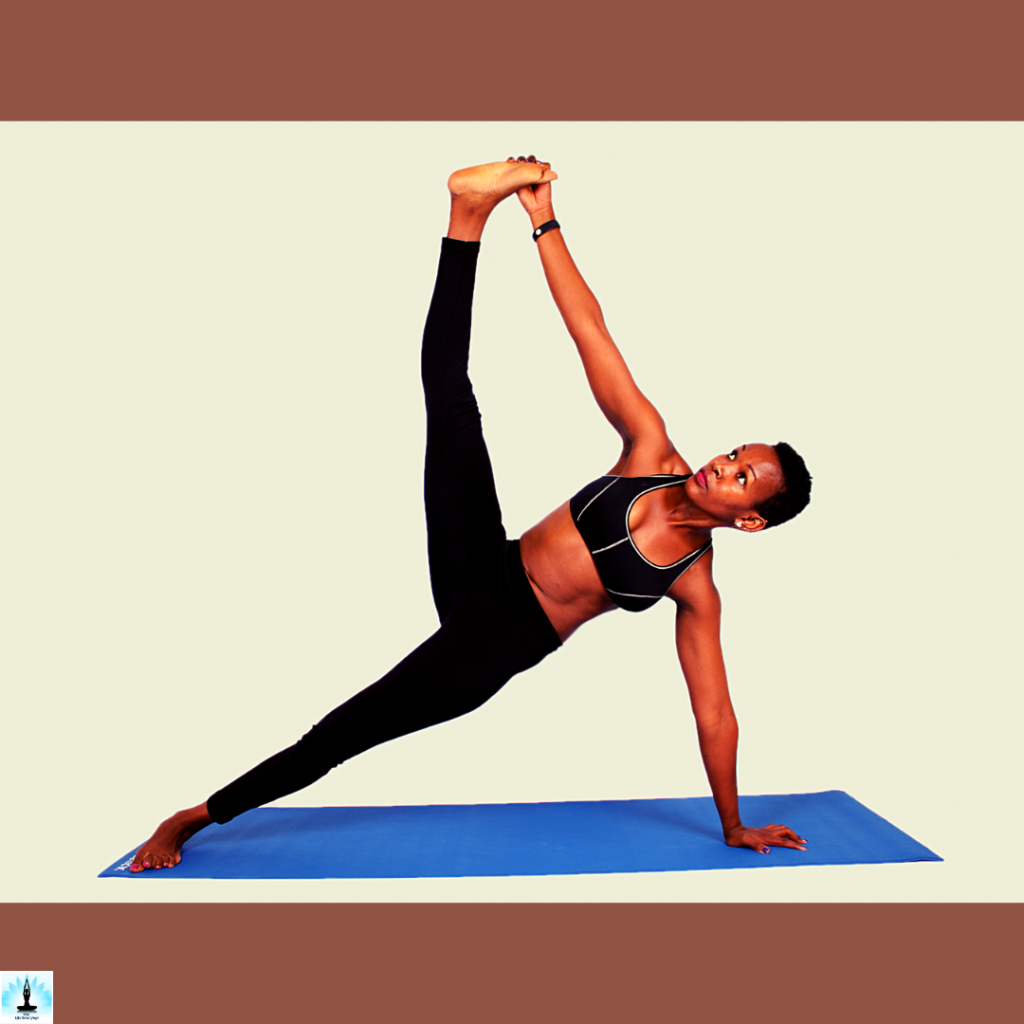
Enhance the stretch and balance by reaching for the big toe of the top foot with the free hand. This variation deepens the lateral stretch and requires greater openness in the shoulders and hamstrings.
3. Fallen Triangle in Vasishtasana

Transition into Fallen Triangle by extending the top leg forward and bringing it down to hover above the mat. This variation intensifies the core engagement and challenges stability in a dynamic movement.
4. One-Legged Vasishtasana
Lift the top leg into the air, parallel to the ground, while maintaining a stable side plank. This variation intensifies the demand on the core and requires heightened concentration to keep the body aligned.
5. Eka Pada Koundinyasana II from Vasishtasana
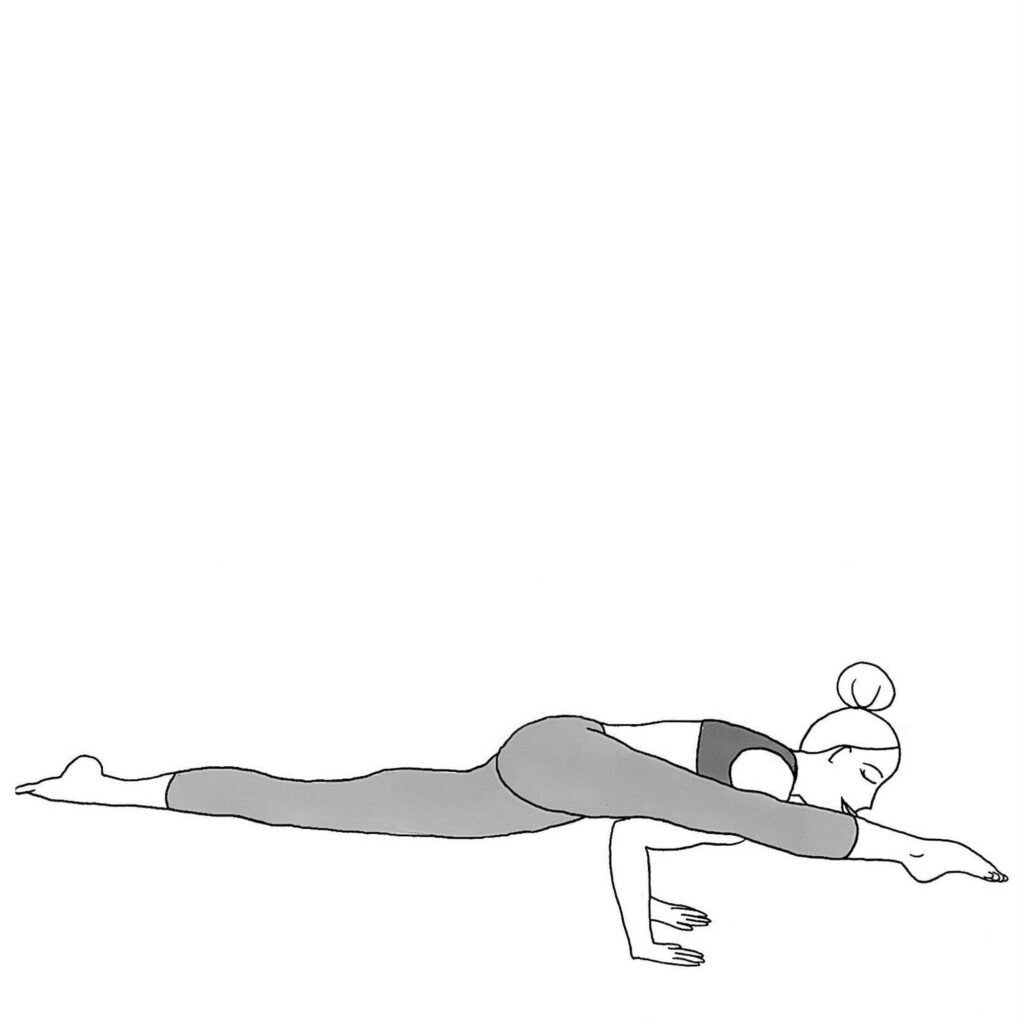
For those with advanced arm balance practice, integrate the challenging Eka Pada Koundinyasana II from Vasishtasana. This transition involves bringing the bottom knee to the triceps and extending the top leg into a one-legged arm balance.
Therapeutic Applications of Vasishtasana
Integrating this pose into a therapeutic yoga practice can offer targeted benefits for individuals facing specific health concerns. Here are some therapeutic applications of Vasishtasana:
1. Core Strengthening for Back Health
Vasishtasana places a significant emphasis on core engagement, particularly the muscles around the spine. This can be therapeutic for individuals dealing with mild to moderate lower back issues, as the strengthened core provides additional support to the spine.
2. Improved Digestive Function
The lateral stretch in Vasishtasana stimulates the abdominal organs, potentially aiding in digestive function. This gentle massage to the digestive organs may offer relief to individuals experiencing mild digestive discomfort or sluggish digestion.
3. Wrist Rehabilitation
While the pose requires weight-bearing on one hand, it can be adapted for individuals with mild wrist issues. Practicing Vasishtasana mindfully and with proper alignment may contribute to wrist strength and rehabilitation.
4. Enhancing Respiratory Capacity
The open chest and extended torso in Vasishtasana allow for deeper breaths, enhancing respiratory capacity. This can be beneficial for individuals with respiratory conditions, such as asthma, by promoting better lung function.
5. Strength and Stability for Joint Health
The weight-bearing nature of Vasishtasana helps build strength in the wrists, arms, and shoulders. This can be therapeutic for individuals working on joint stability, especially those recovering from mild shoulder injuries.
Poses Related to Vasishtasana
Preparatory Poses of Vasishtasana
Here are poses that complement and share similarities with Vasishtasana:
1. Plank Pose
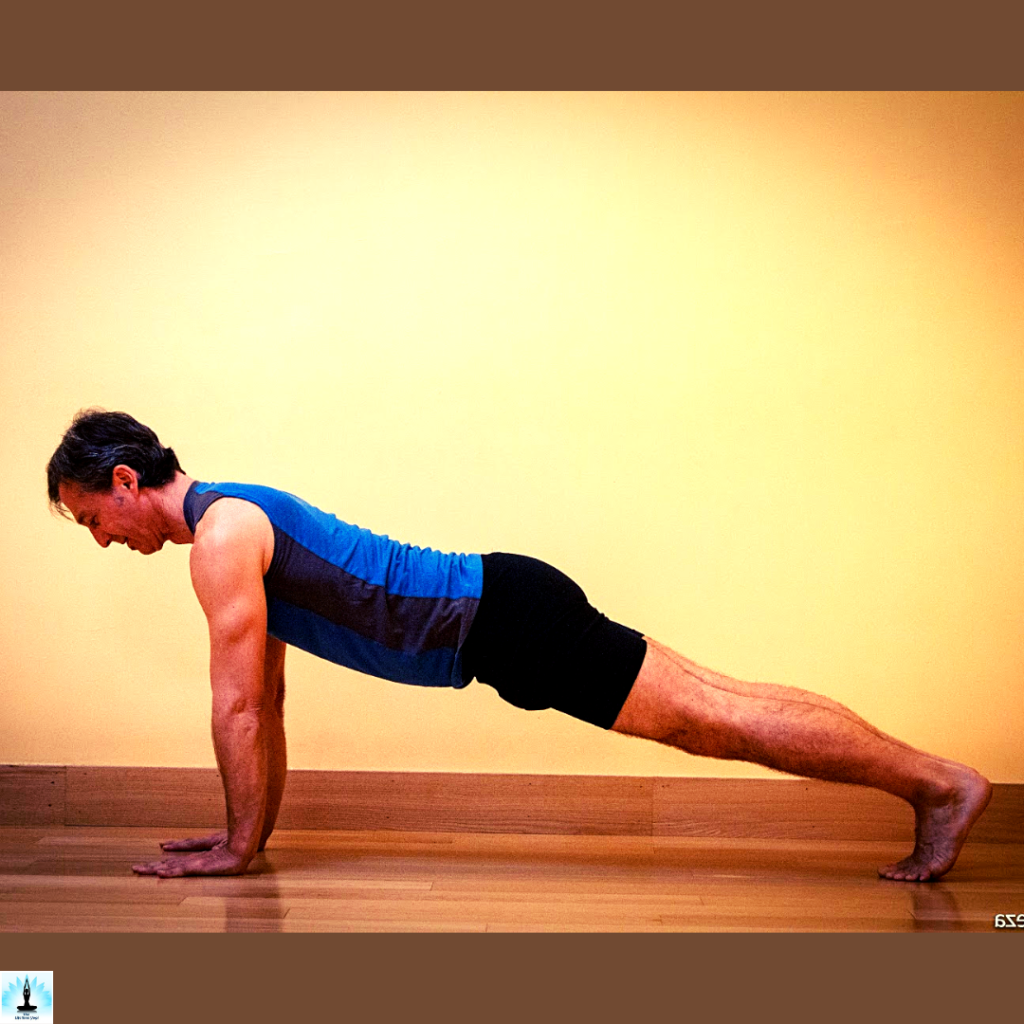
Begin with Plank Pose to strengthen the core and prepare for the weight-bearing aspect of Vasishtasana. Plank serves as an excellent precursor, focusing on abdominal engagement and wrist strength.
2. Vasisthasana Variation with Leg Lift
Elevate the challenge by incorporating a leg lift in Vasishtasana. This variation intensifies the engagement of the core and challenges stability, enhancing the overall strength-building aspect.
3. Fallen Triangle Pose
Combine Vasishtasana with Fallen Triangle by extending the top leg forward and bringing it down to hover above the mat. This adds a dynamic twist to the practice, requiring core strength and balance.
Follow-up Poses of Vasishtasana
1. Side Plank Tree Pose
Merge the balance of Side Plank with the rootedness of Tree Pose by lifting the top leg into Tree Pose while maintaining the side plank position. This fusion challenges stability and enhances hip flexibility.
2. Forearm Side Plank

Transition from the traditional Vasishtasana to Forearm Side Plank for a different wrist alignment. This variation offers an alternative for individuals with wrist sensitivity while still targeting core and shoulder strength.
Beginner’s Tip of Vasishtasana
To set the stage for a successful practice, consider the following beginner’s tips that focus on building a strong foundation and developing familiarity with the pose:
1. Establish Proper Alignment
Begin by aligning your wrist directly under your shoulder in the plank position. Ensuring proper alignment reduces the strain on the wrist and promotes stability, laying the groundwork for a secure Vasishtasana.
2. Build Core Strength
Strengthen your core through exercises like plank variations. A stable core is essential for maintaining balance in Vasishtasana. Incorporate core-focused poses to gradually build strength and stability.
3. Modify with Knee Support
If the full expression feels challenging initially, practice with the lower knee on the mat for added support. This modification allows you to focus on proper alignment and gradually build strength before attempting the full pose.
4. Engage the Shoulder Blades
Activate your shoulder blades by drawing them down your back. This engagement stabilizes the shoulders and contributes to a strong foundation for the pose. It also prevents unnecessary strain in the shoulder area.
What are the limitations of Vasisthasana? | Contraindications and Cautions of Vasishtasana
Vasishtasana, or Side Plank Pose, brings strength and stability to yoga practice, but it’s essential to be mindful of potential contraindications and exercise caution. Individuals with wrist issues, such as injuries or carpal tunnel syndrome, should approach the pose carefully, considering modifications or using props for support.
Those with shoulder injuries, high blood pressure, or recent abdominal surgeries should exercise caution and possibly seek guidance from healthcare professionals. Pregnant individuals, especially in later stages, may need modifications, and those with low bone density or balance issues should approach the pose mindfully
Frequently Asked Questions (FAQs) on Vasishtasana (Side Plank Pose)
What muscles do Vasisthasana work?
Vasisthasana primarily targets several muscle groups, making it a comprehensive strength-building pose. The core muscles, including the obliques and transverse abdominis, are heavily engaged to maintain stability. The shoulders, arms, and wrists bear weight, enhancing their strength.
The leg muscles, particularly the quadriceps and hip abductors, are activated to support the body in a side plank position. Overall, Vasisthasana effectively engages and strengthens the core, upper body, and lower body muscles.
What is Vasisthasana in English?
Vasisthasana, translated to English as Side Plank Pose, is a yoga asana where the practitioner balances on one arm while lifting the body into a side plank position.
What is the story behind Vasisthasana?
While Vasisthasana does not have a specific mythological story like some other poses, it is named after the sage Vasistha, one of the revered Saptarishis (seven great sages) in Hindu tradition. Vasistha was known for his wisdom, spiritual knowledge, and dedication to yoga. The pose is a tribute to the strength and stability exemplified by Sage Vasistha in his spiritual practice.
What is Vasishtasana, and what are its benefits?
Vasishtasana, or Side Plank Pose, is a yoga pose that involves balancing on one arm while lifting the body into a side plank position. Its benefits include strengthening the core, arms, and wrists, improving balance, and promoting concentration.
Are there variations or modifications for beginners?
Yes, beginners can start with modifications such as placing the lower knee on the mat for added support. As strength develops, they can progress to the full pose. Using props like a block can also aid in building confidence.
What precautions should individuals with wrist issues take?
Those with wrist issues should be cautious in Vasishtasana. Using a prop for wrist support, maintaining proper alignment, and gradually increasing duration can help prevent strain.
Can pregnant individuals practice Vasishtasana?
Pregnant individuals should exercise caution, especially in later stages. Consulting with a prenatal yoga instructor or healthcare provider for modifications is advisable to ensure safety.
Is Vasishtasana suitable for people with shoulder injuries?
Individuals with shoulder injuries should approach Vasishtasana with care. Exploring modifications and avoiding excessive strain can help protect the shoulders during the practice.
How does Vasishtasana contribute to overall yoga practice?
Vasishtasana enhances overall yoga practice by building core strength, improving balance, and fostering mental concentration. It complements a well-rounded yoga routine focused on holistic well-being.
Can Vasishtasana be part of a daily practice?
Yes, Vasishtasana can be incorporated into a daily yoga practice. Starting with a few breaths and gradually increasing duration allows practitioners to cultivate strength and proficiency over time.
Are there specific breathing techniques for Vasishtasana?
While in Vasishtasana, maintaining steady and controlled breath is essential. Practitioners should focus on deep inhales and exhales, fostering a sense of calm and concentration.
Can Vasishtasana help with improving balance?
Yes, Vasishtasana is an excellent pose for enhancing balance. The one-arm balance aspect challenges stability, promoting coordination between the body and mind.
How can beginners progress in mastering Vasishtasana?
Beginners can progress by starting with modifications, gradually increasing the duration, and seeking guidance from experienced yoga instructors. Consistent practice and patience contribute to mastery.
Conclusion
In the tapestry of yoga, Vasishtasana emerges as a thread that weaves together strength, balance, and mindfulness. As you delve into the intricacies of this side plank pose, may you discover not only physical prowess but also a deeper connection with your inner self. Let Vasishtasana be a guide on your yogic journey, inviting you to explore the harmonious union of body, breath, and spirit.
References
- Iyengar, B. K. S. (1979) [1966]. Light on Yoga. Schocken Books. pp. 309–311.
- ^ Sinha, S. C. (1996). Dictionary of Philosophy. Anmol Publications. p. 18. ISBN 978-81-7041-293-9.
- Sjoman, Norman E. (1999) [1996]. The Yoga Tradition of the Mysore Palace. Abhinav Publications. pp. 100–101. ISBN 81-7017-389-2.
- Ramaswami, Srivatsa (2001). Yoga for the Three Stages of Life: Developing Your Practice As an Art Form, a Physical Therapy, and a Guiding Philosophy. Simon and Schuster. p. 295. ISBN 978-1-59477-586-4.
